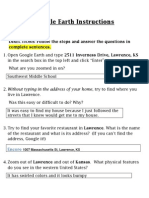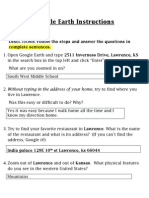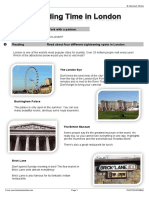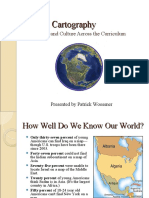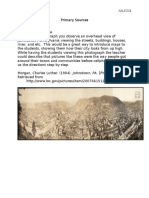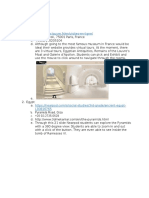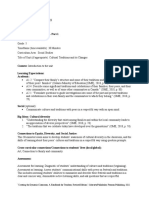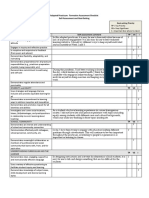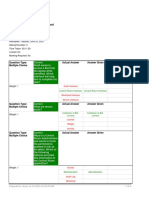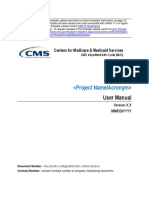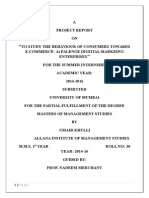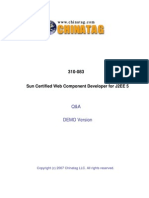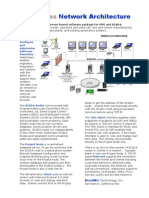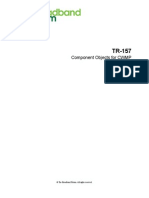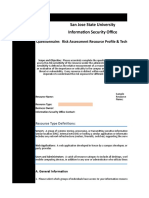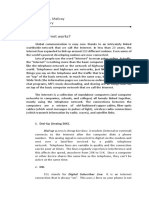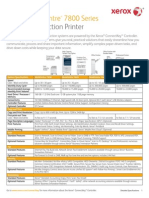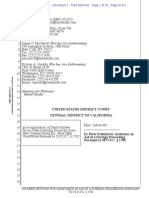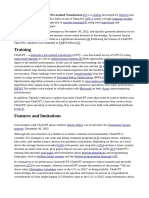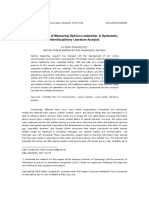Hello class! My name is Betty, and I am a student teacher at the University of Toronto.
Today, I
will introduce you to a digital field trip on the topic of “Changes in Landscapes, and Reflections
on Indigenous and Black history.” This is a group project, and you will work in groups of 3-4
students to explore a 3-4 places in Toronto that are significant in indigenous and Black history.
SETTING UP
First, we will look for the Google Earth website, click the link, and click Launch Earth.
This is the Google Earth site. You can zoom out to see the whole earth. For the purpose of this
project, we will zoom in and focus on Toronto.
Then, we will click the three bars sign on the top left and create our own project. You can select
to create a new project in your google account. You can name your project; in this case, I will
name this one “Digital Field Trip Sample”. You may also add a short description of the places
that you are exploring, and the cultures that you are covering. I encourage you to create one
project as a class and share the link with each other, so everyone can see and contribute
landmarks in the same project.
ADDING A LANDMARK
The first step to build your project is to add landmarks by clicking “New Feature” and then
“Search to add place”.
On the search bar, you will put the name of a place that your group is exploring. In this case, I
will search for Jarvis Collegiate Institute.
Then, you will click “Add to project.” You can keep the name as the place’s name, and make
sure that you are adding to the right project. Now you can see the landmark on the left bar.
One unique feature of Google Earth is that you can drag the person icon on the bottom right to
the place and see the street view. You can drag the icon to any blue lines on the site. Now, we
are on Jarvis Street. You can now see what the place looks like recently. You can adjust the
views, click the arrows to “walk” around the place.
ADD MORE DETAILS
Next, you can click the pen icon to put more information. Click the “replace” button to put
more pictures, descriptions, and resources. I invite you to upload pictures of the place in the old
time. You can upload pictures that you found on other websites. For instance, I found a few old
pictures from the Toronto library website. Make sure that you give credit and links to the
pictures that you uploaded. You can also use pictures on the Google Image Search tab. And I
can select a picture that I want. You can add as many pictures as you want.
In the description box, you can add your summary of the indigenous or Black history of the
place. You can find many resources online. For instance, I found a CBC article on the history of
Jarvis Street, and how its name is related to Black history.
�After reading this article and a few other sources, I can write my summary. “Jarvis Street is
named after a slave owner in the 19th century.” And I encourage you to write more of what you
have learnt.
Below your summary paragraph, you will put links to the resources that you have found. In this
case, I found a CBC article, and I will copy the link to my description. You are invited to find
more resources to gain more knowledge about the place. For instance, I also found a Toronto
District School Board description of the school. And this will give me more perspectives and
knowledge.
If you are able to find any virtual tours online, put it there! It will help your group and other
students see and experience being at the place. You may find virtual trips on YouTube,
Databases, and library sites etc.
If you found any other interesting resources, put it there for further exploration! Remember
that I found some old pictures from the Toronto library site? I can link it there as a gallery
source!
Last but not least, don’t forget to link the pictures that you used!
If you want, you can also customize the size and colours of your landmarks.
WRAP UP:
I would like each group to contribute 3-4 landmarks in the project, so your other classmates can
click on your landmarks, see street views, view the old pictures, summary of history, and
additional resources. By the end of the project, you will have an interactive map that gives you
a great idea of significant historical places and their stories on this land. Good luck with the
project!




